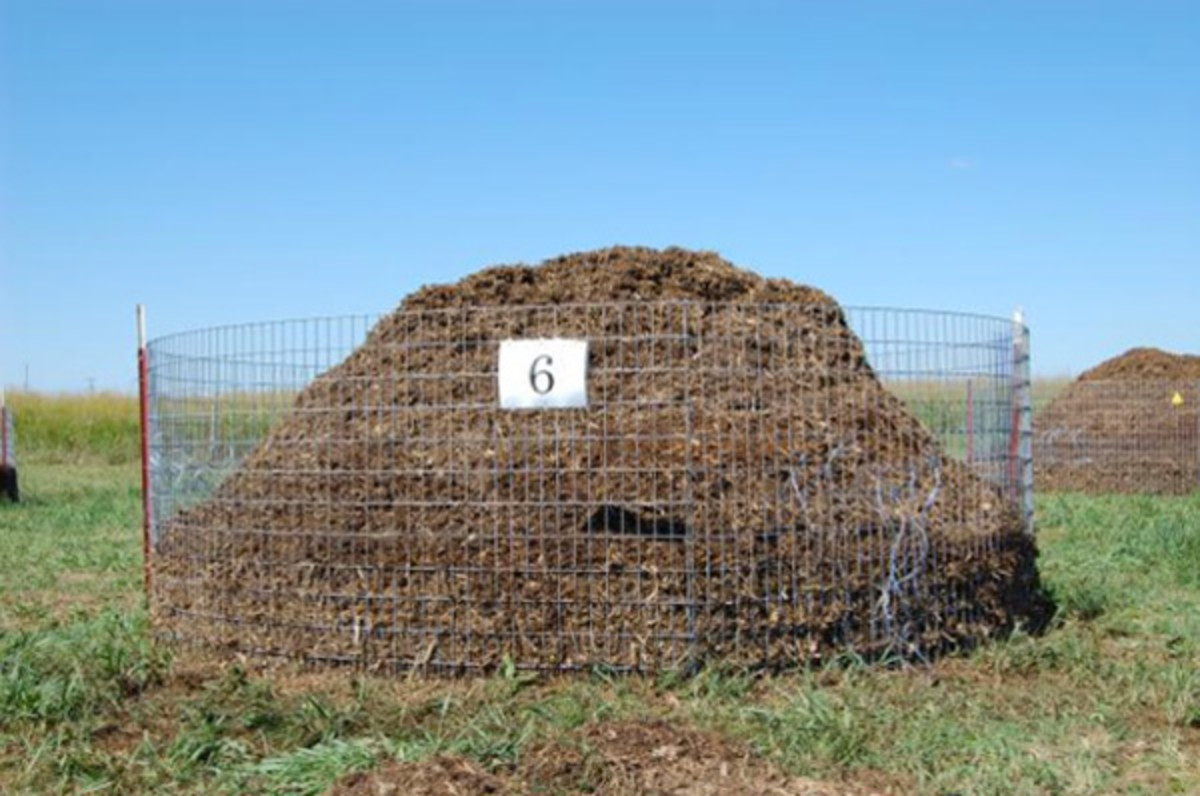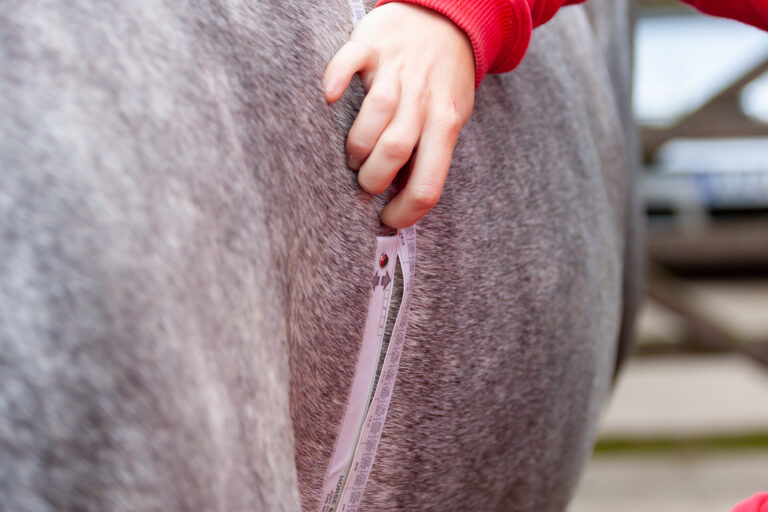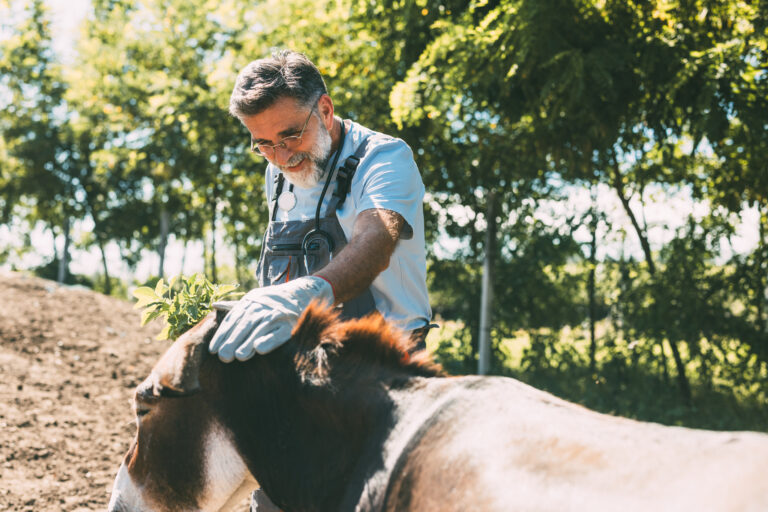
What to do with horses that have been euthanized is becoming increasingly problematic. The concern that euthanasia drugs stay in the horse’s body for long periods of time after the animal was killed has been proven by the deaths of domestic and wild animals that have eaten the flesh of euthanized horses.
Josh Payne, PhD, MS, of Oklahoma State University, did a research study on “Beyond the Basics–Fate of Euthanasia Drugs During Equine Mortality Composting.” You can reach Payne at Joshua.payne@okstate.edu. The complete text as a PDF is available online.
Introduction
Equine mortality is an issue encountered by every horse owner. Mortality may be associated with disease, injury, age or a catastrophic event. For horses suffering from an incurable illness or injury, euthanasia is often the most humane option. The American Veterinary Medical Association (AVMA) approved methods for horse euthanasia include barbiturate overdose and captive bolt or gunshot to the temporal lobe (AVMA, 2013). Following mortality, the carcass must be properly disposed of according to local regulations. For many horse owners, carcass disposal options are limited and can be costly. Improper disposal of animal carcasses can present potential environmental, animal, and public health risks.
Common methods for livestock mortality disposal include burial, incineration, rendering, landfilling, and composting. Burial requires that local environmental guidelines be followed, requires heavy equipment, may temporarily disturb the land needed for grazing, and brings the carcass closer to the water table. Researchers have demonstrated the potential transport of carcass leachate components, such as nutrients and bacteria, from burial pits to groundwater (Ritter and Chirnside, 1995; Glanville, 2000; Pratt and Fonstad, 2009). Proper incineration requires a closed air unit, can be costly due to fuel costs, and is mainly designed for smaller animals; dismemberment may be required for larger carcasses. Although rendering is a very effective method for carcass disposal, rendering is limited by the small and declining number of rendering facilities. Furthermore, rendering plants supplying proteins and fats for pet foods are increasingly reluctant to accept carcasses euthanized with sodium pentobarbital, a euthanasia drug found to persist through the rendering process (O’Connor et al., 1985; FDA 2002; AVMA 2013). Landfilling requires landfill tipping fees and may be emotionally unpleasant for the horse owner. Both rendering and landfilling require transportation of the carcass off-site, which may increase biosecurity risks during a disease outbreak.
Composting horse mortalities is a relatively inexpensive, biosecure, and environmentally sound approach to addressing the issue of carcass disposal when properly managed. By definition, composting is a controlled biological decomposition process that converts organic matter into a stable, humus-like product. Composting animal carcasses is characterized by microbial breakdown of a large centralized nitrogen source, the carcass, which is surrounded by a carbon source, the bulking agent. The bulking agent supplies carbon for microbial energy while the carcass tissues and fluids supply nitrogen for microbial protein synthesis. Optimal conditions for carcass composting include a carbon to nitrogen ratio around 30:1 and a moisture content of approximately 50% (Kalbasi et al., 2005; Berge et al., 2009). The process begins with an initial breakdown of carcass soft tissue by naturally present microorganisms which produce heat, carbon dioxide, ammonia, and volatile organic compounds as byproducts (Berge et al., 2009). Following soft tissue decomposition, thorough mixing of the bulking agent and carcass promotes an ideal blend of carbon and nitrogen for optimum composting. The bulking agent traps leachate and odors produced during the process, therefore acting as a biofilter between the carcass and the environment. The continuous high temperatures (> 131°F or 55°C) achieved through proper composting will destroy most pathogens and viruses (Kalbasi et al., 2005; Glanville, 2003 and Kalbasi et al., 2006; Wilkinson, 2007). Microorganisms will eventually degrade the carcass leaving only a few remaining bones. This valuable byproduct can then be land applied as a fertilizer source, recycling nutrients and organic matter to the soil, or reused to compost additional mortalities.
Recent interest has focused on the common euthanasia barbiturate, sodium pentobarbital, and its persistence in the animal carcass following euthanasia. In 2003 the FDA added environmental warning labels to euthanasia products containing pentobarbital in regards to proper carcass disposal (FDA, 2003). Barbiturates accumulate within the carcass and can cause sedation or death of animals that may consume the body (AVMA, 2013). Accidental pentobarbital poisoning has been previously reported in domestic pets (Edgson and Payne, 1967; Reid, 1978; Polley and Weaver, 1977; Anderson et al., 1979; Humphreys et al., 1980; Fucci et al., 1986), large exotic cats (Verster et al., 1990; Jurczynski and Zittlau, 2007) and other wildlife including bald eagles (Otten, 2001; Krueger and Krueger, 2002; O’Rourke, 2002) following consumption of carcass tissue from animals euthanized with pentobarbital. In a 2010 case report, secondary pentobarbital poisoning was diagnosed in dogs that consumed a partially buried horse carcass which had been euthanized 2 years prior (Kaiser, et al., 2010). In addition to secondary toxicosis concerns, water quality may be impacted from improperly managed animal carcasses following euthanasia with pentobarbital. Pentobarbital has been found to be relatively stable in natural waters (Eckel et al., 1993; Peshka et al., 2006), aqueous solutions (Gannett et al., 2001), and blood and tissues (Levine et al., 1984).
It has been suggested that proper composting of animal carcasses euthanized with pentobarbital may degrade drug residues to negligible concentrations. However, recent research has shown that pentobarbital persisted to 180 days in equine mortality compost piles (Cottle et. al, 2010) and to 50 days in compost columns (Cottle, 2011). The researchers identified a need for further research investigating the persistence of sodium pentobarbital in animal carcasses during composting. The objectives of this experiment were to expand upon previous research by quantifying pentobarbital residues in equine mortality compost piles over a longer duration using innovative sampling schemes and to determine the efficacy of wood chips as a carbonaceous material for degrading equine carcasses.
Materials and Methods
Six, 3.7 m2 plots were used to construct separate compost bins. Each compost bin was constructed with 6.1 m x 1.2 m metal horse panels supported by 3 steel t-posts. The bulking agent for construction of compost piles consisted of hardwood chips that were wetted to approximately 50% moisture content. Bulking agent was added at a depth of 0.46 m creating the pad. Twenty-four whiffle balls pre-filled with wood chips were centrally placed on each pad. Nylon hay twine was tied to each whiffle ball for retrieval during required sampling times.
A licensed veterinarian provided six horse carcasses for use in the experiment. These horses had required euthanasia for health reasons. All horses were weighed and then sedated with an intravenous injection of 8 ml of xylazine. After sedation the three horses in the treatment group were euthanized by intravenous injection of 60 ml of sodium pentobarbital (Beuthanasia-D, Schering-Plough Animal Health). The three control group horses were anesthetized by intravenous injection of 15 ml of ketamine hydrochloride and then humanely euthanized by precise gunshot to the temporal lobe.
Following euthanasia, each carcass was placed on the center of the woodchip pad and surrounded with 0.6 m of additional wood chips. Serum and liver samples were immediately obtained while whiffle ball, soil, and compost samples were obtained over time. Each sample was analyzed for sodium pentobarbital residues. Compost pile and ambient temperatures were also recorded throughout the duration of the study.
Results and Conclusions
The findings from this experiment indicate that wood chips were effective at decomposing equine mortalities at 129 days of composting. Nearly all of the soft tissue was completely degraded with only large bones present. Compost temperatures met EPA class B biosolid standards for pathogen reduction. At day 367, sodium pentobarbital still persisted in the treatment group with no clear trend of concentration reduction from day 7 to day 367. Day 367 soil sample results showed that sodium pentobarbital has the potential to leach from the carcass, through the compost pad and into the soil. However, carcass degradation by composting followed by homogenous compost mixing allows for dilution of any remaining sodium pentobarbital residues. More-over, enveloping the carcass with carbonaceous material and constructing a physical barrier reduces the risk of secondary toxicosis from scavenging animals. These results further illustrate the importance of proper management of animal carcasses euthanized with a barbiturate to reduce the risk of surface or groundwater contamination and secondary toxicosis by other animals.
Literature Cited
American Veterinary Medical Association (AVMA). 2013. AVMA Guidelines for the Euthanasia of Animals: 2013 Edition. Accessed March 14, 2013. https://www.avma.org/KB/Policies/Documents/euthanasia.pdf
Anderson, J.F., D. Filkins, C.M. Stowe, and T.D. Arendt. 1979. Accidental relay toxicosis caused by pentobarbital euthanasia solution. J. Am. Vet. Med. Assoc. 175:583-584.
Berge, A.C.B., T.D. Glanville, P.D. Millner, and D.J. Klingborg. 2009. Methods and microbial risks associated with composting of animal carcasses in the United States. J. Am. Vet. Med. Assoc. 234(1):47-56.
Cottle, L.M., L.A. Baker, J.L. Pipkin, D.B. Parker, R.E. DeOtte Jr., and B.W. Auvermann. 2010. Sodium pentobarbital residues in compost piles containing carcasses of euthanized equines. International Symposium on Air Quality and Manure Management for Agriculture (cd).
Cottle, L.M. 2011. Fate and transport of sodium pentobarbital from disposal of euthanized equine carcasses during the composting process. Ph.D. Diss. West Texas A&M University, Canyon, TX.
Eckel, W.P., B. Ross, and R.K. Isensee. 1993. Pentobarbital found in ground water. Ground Water. 31:801-804.
Edgson, F.A. and J.M. Payne. 1967. The dangers of poisoning domestic pets with meat from animals subjected to barbiturate euthanasia. Vet. Rec. 80:364.
Food and Drug Administration (FDA). 2002. Food and Drug Administration/Center for Veterinary Medicine Report on the risk from pentobarbital in dog food. Accessed July 3, 2013. http://www.fda.gov/AboutFDA/CentersOffices/OfficeofFoods/CVM/CVMFOIAElectronicReadingRoom/ucm129131.htm
Food and Drug Administration (FDA). 2003. Environmental warning added to animal euthanasia products. Accessed April 16, 2012. http://www.fda.gov/AnimalVeterinary/NewsEvents/CVMUpdates/ucm119205.htm
Fucci, V., W.E. Monroe, D.H Riedesel, and L. L. Jackson. 1986. Oral pentobarbital intoxication in a bitch. JAVMA. 188(2):191-192.
Gannett, P.M., J.R. Daft, D. James, B. Rybeck, J.B. Knopp, and T.S. Tracy. 2001. In vitro reaction of barbiturates with formaldehyde. J. Anal. Toxicol. 25:443-449.
Glanville, T. 2000. Impact of livestock burial on shallow groundwater quality. Proceedings of the American Society of Agricultural Engineers, Mid Central Meeting. St. Joseph, MI.
Glanville, T.D., T.L. Richard, J.D. Harmon, D.L. Reynolds and S.S. Sadaka. 2003. Environmental impact and biosecurity of composting for emergency disposal of livestock mortalities. Proceedings of the American Society of Agricultural Engineers Annual International Meeting. Las Vegas, NV.
Humphreys, D.J., J.A. Longstaffe, J.B.J. Stodulski, R.R. Fysh and I. Lopatkin. 1980. Barbiturate poisoning from pet shop meat: Possible association with perivascular injection. Vet. Rec. 107:517.
Jurczynski, K., and E. Zittlau. 2007. Pentobarbital poisoning in Sumatran tigers. J. Zoo. Wildl. Med. 38:583-584.
Kaiser, A.M., W. McFarland, R.S. Siemion, and M.F. Raisbeck. 2010. Secondary pentobarbital poisoning in two dogs: A cautionary tale. J. Vet. Diagn. Invest. 22:632-634.
Kalbasi, A., S. Mukhtar, S.E. Hawkins and B.W. Auvermann. 2005. Carcass composting for management of farm mortalities: A review. Compost Sci Util. 13(3):180-193.
Kalbasi, A., S. Mukhtar, S.E. Hawkins and B.W. Auvermann. 2006. Design, utilization, biosecurity, environmental and economic considerations of carcass composting. Compost Sci Util. 14(2):90-102.
Krueger, B., and K.A. Krueger. 2002. U.S. Fish and Wildlife Fact Sheet: Secondary pentobarbital poisoning of wildlife. Accessed August 22, 2012. http://www.fws.gov/mountain-prairie/poison.pdf
Levine, B.S., R.V. Blanke, and J.C. Valentour. 1984. Postmortem stability of barbiturates in blood and tissues. J. Forensic Sci. 29:131-138.
O’Connor, J.J., C.M. Stowe, and R.R. Robinson. 1985. Fate of sodium pentobarbital in rendered products. Am. J. Vet. Res. 46(8):1721-1724.
O’Rourke, K. 2002. Euthanized animals can poison wildlife: Veterinarians receive fines. J. Am. Vet. Med. Assoc. 220:146 -147.
Otten, D.R. 2001. Advisory on proper disposal of euthanized animals. J. Am. Vet. Med. Assoc. 219:1677-1678.
Peshka, M., J.P. Eubeler, and T.P. Knepper. 2006. Occurrence and fate of barbiturates in the aquatic environment. Environ. Sci. Technol. 40:7200-7206.
Polly, L. and B.M.Q. Weaver. 1977. Accidental poisoning of dogs by barbiturates in meat. Vet. Rec. 100:48.
Pratt, D.L., and T.A. Fonstad. 2009. Geochemical implications of livestock mortality burial. 3rd International Symposium on Management of Animal Carcasses, Tissue, and Related Byproducts Proceedings (cd). Davis, CA.
Reid, T.C. 1978. Barbiturate poisoning in dogs. N.Z. Vet. J. 26:190.
Ritter, W.F., and A.E.M. Chirnside. 1995. Impact of dead bird disposal pits on ground-water quality on the Delmarva Peninsula. Bioresour. Technol. 53:105-111.
Verster, A., H.H.E. Schroder, and J.W. Nesbit. 1990. Accidental pentobarbital poisoning in a lioness. J. S. Afr. Vet. Assoc. 61(1):37-38.
Wilkinson, K.G. 2007. The biosecurity of on-farm mortality composting. J. Appl. Microbiol. 102:609-618.




